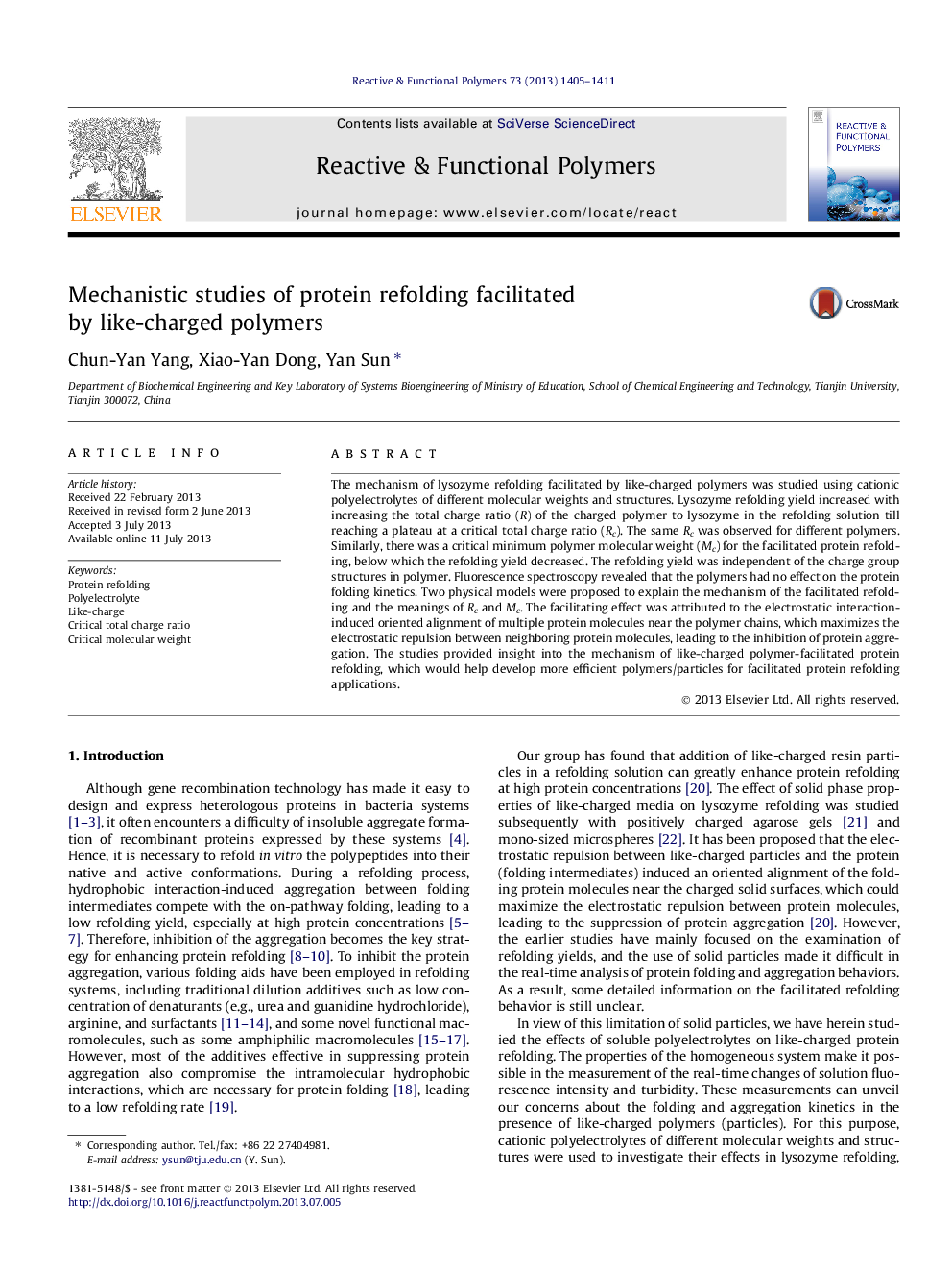| Article ID | Journal | Published Year | Pages | File Type |
|---|---|---|---|---|
| 5209972 | Reactive and Functional Polymers | 2013 | 7 Pages |
Abstract
The mechanism of lysozyme refolding facilitated by like-charged polymers was studied using cationic polyelectrolytes of different molecular weights and structures. Lysozyme refolding yield increased with increasing the total charge ratio (R) of the charged polymer to lysozyme in the refolding solution till reaching a plateau at a critical total charge ratio (Rc). The same Rc was observed for different polymers. Similarly, there was a critical minimum polymer molecular weight (Mc) for the facilitated protein refolding, below which the refolding yield decreased. The refolding yield was independent of the charge group structures in polymer. Fluorescence spectroscopy revealed that the polymers had no effect on the protein folding kinetics. Two physical models were proposed to explain the mechanism of the facilitated refolding and the meanings of Rc and Mc. The facilitating effect was attributed to the electrostatic interaction-induced oriented alignment of multiple protein molecules near the polymer chains, which maximizes the electrostatic repulsion between neighboring protein molecules, leading to the inhibition of protein aggregation. The studies provided insight into the mechanism of like-charged polymer-facilitated protein refolding, which would help develop more efficient polymers/particles for facilitated protein refolding applications.
Related Topics
Physical Sciences and Engineering
Chemistry
Organic Chemistry
Authors
Chun-Yan Yang, Xiao-Yan Dong, Yan Sun,
